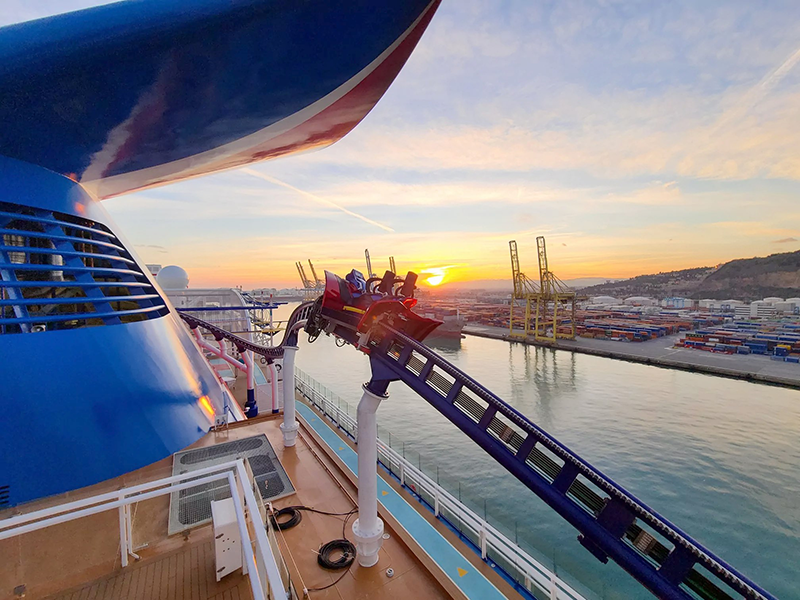How Carnival Cruise Line’s "Bolt" Struck Success

On July 31, 2021, Carnival Cruise Line was finally able to celebrate the launch of its massive new cruise ship, Mardi Gras, which was originally set to embark on its first voyage in 2020 but was delayed due to restrictions related to the COVID-19 pandemic. The new vessel boasts a capacity of 6,465 persons and 17 passenger decks, with a distinctive roller coaster sitting on the top deck.
“We wanted to do something really special, really fun, that has never been done before on this new ship class, and introducing the first roller coaster at sea certainly fit the bill,” says Glenn Aprile, director, new builds product development for Carnival. “It’s something we’ve dreamed about doing for a long time.”
“Bolt: Ultimate Sea Coaster” was manufactured by Maurer Rides GmbH in Kirchheim, Germany. Project manager Marco Hartwig explains to Funworld that the 220-meter-long Spike Coaster reaches speeds of 60 kph and has a special track.
“The toothed rack—which is attached to the rail—flexibly conforms to all radii and twists of the rail, as does the power rail that’s been developed especially for high speeds,” says Hartwig. “Hence, this allows constant propulsion to be delivered even in the tightest curves and all the way up vertical route segments.”
On “Bolt,” passengers are seated inline in pairs on vehicles resembling motorcycles, where they can control the speed of their vehicle. “The speed range within which drivers can ride is preprogrammed for the particular track layout,” says Hartwig. “This drive-and-control concept ensures that, despite the ship’s movements, the vehicles can overcome any incline and don’t drive too fast into the next curve.”
To address the challenges of corrosive salt air, Maurer placed a “Bolt” vehicle in a custom-built salt spray chamber. At the end of a predefined period, the vehicle was intensely examined to identify weak points.
“Subsequently, a corrosion protection concept was systematically developed for all affected components,” Hartwig says. “For the frame parts, for example, a special coating system was selected, and stainless-steel fasteners were used wherever possible.”
He also notes that due to the differences in shipbuilding and steel construction tolerances, the complete coaster had to first be assembled on land. This way, the exact base-point coordinates of all supports could be measured and sent to the shipyard to prepare the ride’s foundation. Finally, the positions were confirmed with control measurements.
As for what happens if a “Bolt” vehicle happens to stop on the ship due to a power outage, the system is switched to an emergency power mode, providing enough power to safely return vehicles to the station.
“In the unlikely event that a ‘Bolt’ vehicle comes to a stop along the track despite the power supply,” says Hartwig, “the coaster has a separate rescue vehicle. [Utilizing it], the operator can approach the stopped vehicle and tow it away with the help of a coupling rod.”
Just as with any coaster at a land-based amusement park, Carnival’s Aprile says ride safety is paramount.
“There are trained professionals onboard to maintain and inspect ‘Bolt’ on a daily basis, including a protocol of safety checks before opening,” Aprile says.
Carnival placed an order for another identical coaster on the Carnival Celebration, scheduled for delivery in November 2022.
